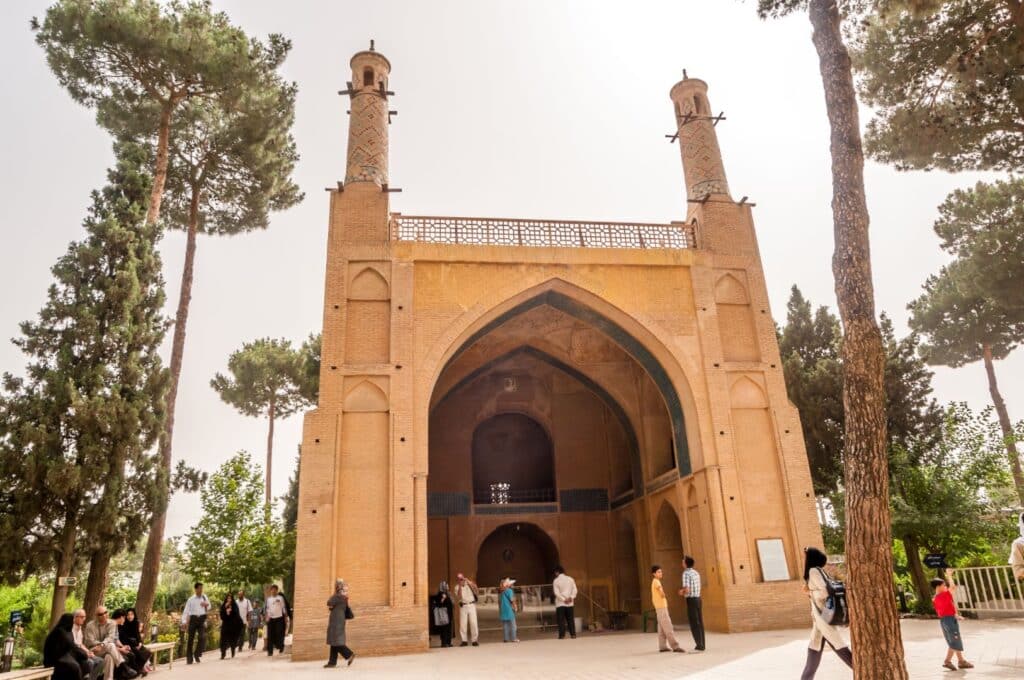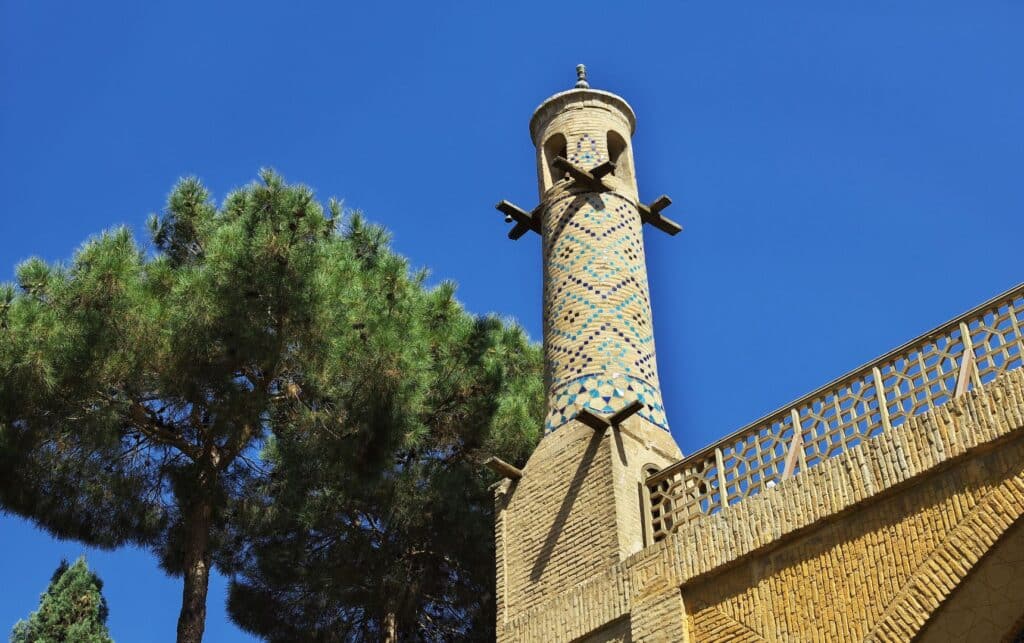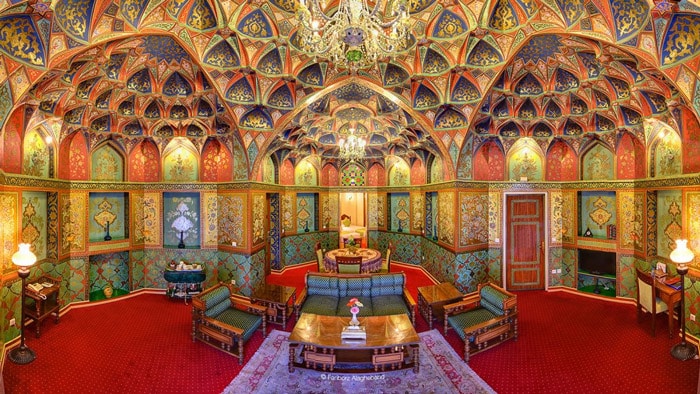Monar Jonban – The Shaking Minarets of Isfahan
Exploring the Mystique of the Monar Jonban

The Monar Jonban, also known as the Shaking Minarets, is an extraordinary architectural wonder located in Isfahan, Iran. This historic structure, nestled in the vicinity of Nasrabad, a district of Isfahan, is renowned for its unique engineering marvel.
The most fascinating aspect of the Monar Jonban is its pair of minarets. Despite their seemingly sturdy construction, these tall and slender towers possess a remarkable feature: they sway. Demonstrating an exceptional example of architectural synchronization, when one minaret is gently shaken, its twin also starts to vibrate and sway in a harmonious response. This astonishing phenomenon exemplifies not only the aesthetic appeal but also the structural brilliance of the design, showcasing the extraordinary talent and ingenuity of its creators.
Dating back to ancient times in a village called Karladan, the Monar Jonban has been a testament to the skills of its artisans. The craftsmen and tile workers of the era embellished it with star-shaped lapis lazuli and multilateral turquoise tiles, enhancing its beauty and magnificence. This blend of artistic decoration and unique structural design makes the Monar Jonban a captivating and significant historical landmark in Iran.
Contents
Vintage Footage: Monar Jonban’s Swaying Minarets
Where is the Monar Jonban?
The Monar Jonban is considered one of Iran’s wonders. It is located approximately 6 kilometers on the Isfahan to Najafabad road, on the right side.
Nearby, you can also find another historical site, the Atashgah. Accessible by personal vehicle or taxis, including online services, it’s a straightforward 6-kilometer drive down Atashgah Street to reach this magnificent structure, which also features a parking area for convenience.
History of the Monar Jonban
According to historical documents, the Monar Jonban was built during the reign of a ruler named Mohammad Khodabandeh Uljaytu in Isfahan.
It houses the tomb of Uncle Abdullah, a revered godly sage. Thus, it’s also known as the Tomb of Sheikh Amir Abdullah. The number 716 etched on his tombstone signifies the year of construction of his resting place.
For an in-depth guide to Isfahan and personalized travel experiences, visit Isfahan Travel Guide and explore tailor-made tours by SURFIRAN. If you’re looking for accommodation options in Isfahan, check out hotels in Isfahan through OrientTrips for a comfortable stay.
The Monar Jonban: Ilkhanid Legacy
The Monar Jonban, a single-iwan (porch) structure, was constructed during the Ilkhanid dynasty. Existing evidence suggests that the building was built in the Mongol style. However, the minarets’ architecture indicates they were added to the iwan during the late Safavid era.
Architecture

The Monar Jonban complex consists of several parts:
Minarets
The most significant feature of the complex. Each minaret is 9 meters in width and 17 meters in height, adorned with multilateral turquoise tiles and star-shaped lapis lazuli tiles. A unique characteristic of these minarets is that shaking one causes the other to move as well.
Iwan
Hosting the tomb of Sheikh Amir Abdullah, the iwan is 10 meters above ground level. Constructed using bricks, it is decorated with tiles and paintings inside the dome. Several white tombstones near the iwan appear to be remnants of an ancient cemetery on which the structure was built. Spiral stairs lead to the rooftop and minarets, although this area is off-limits to visitors.
Chelleh-Khaneh
Two small rooms in the complex are known as Chelleh-Khaneh, where sages and ascetics would undergo 40-day spiritual retreats, engaging in rigorous devotion and solitude with God.
The Phenomenon Behind
The swaying of one minaret causes the other and the rest of the structure to tremble. This unique feature has made the complex a notable attraction in Isfahan. Similar historical structures in countries like Saudi Arabia and Iraq have been found to exhibit this movement.
According to physicists and engineers, the Doppler effect or resonance might explain the minarets’ movement. The minarets are similar to each other and not overly heavy. When one is shaken, it naturally affects the other, causing it to move.

Some believe the Monar Jonban of Isfahan differs from other shaking minarets because, in addition to the minarets swaying, other parts of this ancient structure also tremble.
Hamid Shahinpour, head of the Research Committee of Iran’s Indigenous Technologies Association, provides an interesting analysis: like two pendulums tied at equal lengths to a horizontal string, shaking one causes the other to move. If one pendulum is longer or heavier, shaking the longer or heavier one will not move the other. This principle applies to the Monar Jonban’s minarets, where shaking one affects the other.
Read More: Isfahan Travel Guide
Visiting Hours and Tickets
The Monar Jonban of Isfahan is open for visitors from 9 AM to 6 PM. If you’re interested in witnessing the minarets’ sway, they are moved at specific times: 10:30 AM, 12 PM, and 1:30 PM during the morning shift, and at 3 PM, 4:30 PM, and 6:30 PM in the afternoon shift.





